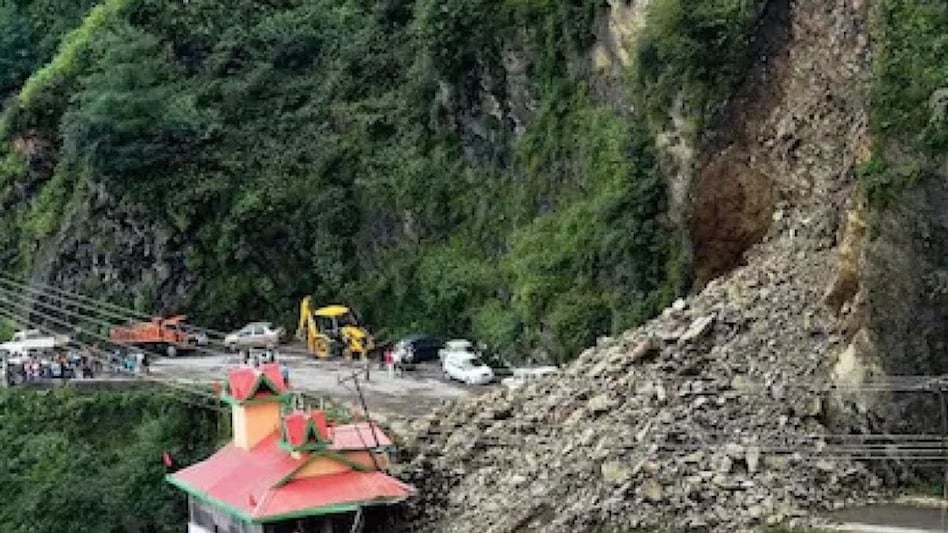Landslides Leave Tourists on Manali-National Highway for 24 Hours
Introduction
In a recent incident in Shimla, landslides wreaked havoc on the Manali-NH, leaving numerous tourists stranded for a grueling 24 hours. This unexpected turn of events not only disrupted travel plans but also posed significant challenges to the affected individuals. The Times of India reported on the incident, shedding light on the dire situation faced by these tourists. In this article, we will delve deeper into the details of the incident, explore its implications, and provide insights into how such situations can be better managed in the future.
Understanding the Manali-NH Landslides
The Manali-NH is a popular route among tourists, offering breathtaking scenic beauty and serving as a gateway to the picturesque town of Manali. However, due to the region's challenging terrain, landslides are not uncommon, especially during the monsoon season. The recent incident highlighted the vulnerability of this route to natural calamities, leaving travelers stranded and helpless.
Impact on Travelers
The landslides on the Manali-NH caused massive disruptions, both physically and emotionally, to the stranded tourists. With the road blocked and no immediate rescue in sight, individuals had to endure a harrowing experience, uncertain about when they would be able to continue their journey. The lack of access to basic amenities and the constant fear of further landslides compounded their distress.
Response and Rescue Efforts
Authorities and local organizations swiftly swung into action to rescue the stranded tourists. Rescue teams were deployed to assess the situation, clear debris, and restore the road's functionality. However, due to the treacherous conditions, the rescue operations faced significant challenges, prolonging the ordeal for the affected individuals.
Preparing for and Mitigating Landslide Incidents
In the wake of the Manali-NH landslide incident, it is crucial to evaluate measures that can help mitigate the impact of such events and improve response strategies. By adopting a proactive approach, authorities can minimize the risks associated with landslides and enhance the safety of travelers.
Implementing Early Warning Systems
One of the key steps towards mitigating the impact of landslides is the installation of early warning systems. These systems employ various sensors and monitoring devices to detect changes in the environment that may indicate an impending landslide. By providing timely alerts, authorities can ensure that appropriate actions are taken to safeguard lives and property.
Strengthening Infrastructure
Investing in robust infrastructure is vital to withstand natural disasters like landslides. Constructing sturdy retaining walls, installing protective barriers, and reinforcing slopes can significantly reduce the vulnerability of roads and highways to landslides. Additionally, regular inspections and maintenance should be conducted to identify and rectify any weak points that could potentially trigger landslides.
Enhancing Emergency Response Mechanisms
Efficient emergency response mechanisms play a crucial role in minimizing the impact of landslides. It is essential to establish clear communication channels between authorities, rescue teams, and affected individuals. Furthermore, training programs should be conducted to equip emergency personnel with the necessary skills and knowledge to handle such situations effectively.
FAQs about the Manali-NH Landslide Incident
Q: What caused the landslides on Manali-NH?
A: The landslides on Manali-NH were triggered by heavy rainfall, which led to soil erosion and destabilization of slopes along the route.
Q: How long did the tourists remain stranded?
A: The tourists were stranded for approximately 24 hours until the road was cleared and deemed safe for travel.
Q: Were there any casualties or injuries during the incident?
A: Fortunately, no casualties or injuries were reported during the landslides. However, the incident caused immense inconvenience and distress to the affected tourists.
Q: What steps were taken to rescue the stranded individuals?
A: Rescue teams were deployed to the site to assess the situation, clear debris, and restore the road's functionality. However, due to challenging conditions, the rescue operations took some time.
Q: Can such incidents be prevented in the future?
A: While it is challenging to entirely prevent natural disasters like landslides, proactive measures such as early warning systems, infrastructure strengthening, and enhanced emergency response mechanisms can significantly mitigate their impact.
Q: Is it safe to travel on the Manali-NH now?
A: After the necessary clearance and restoration work, the Manali-NH is now deemed safe for travel. However, it is essential to remain vigilant during the monsoon season and heed any advisories issued by the authorities.
Conclusion
The landslides on the Manali-NH have highlighted the vulnerability of this popular tourist route to natural calamities. The incident served as a wake-up call, emphasizing the need for proactive measures to mitigate the impact of landslides and enhance emergency response strategies. By investing in early warning systems, strengthening infrastructure, and improving communication channels, authorities can ensure the safety and well-being of travelers. Furthermore, incidents like these underscore the importance of staying informed, following safety guidelines, and exercising caution while traveling in regions prone to natural disasters.




.jpeg)

.jpg)




0 Comments